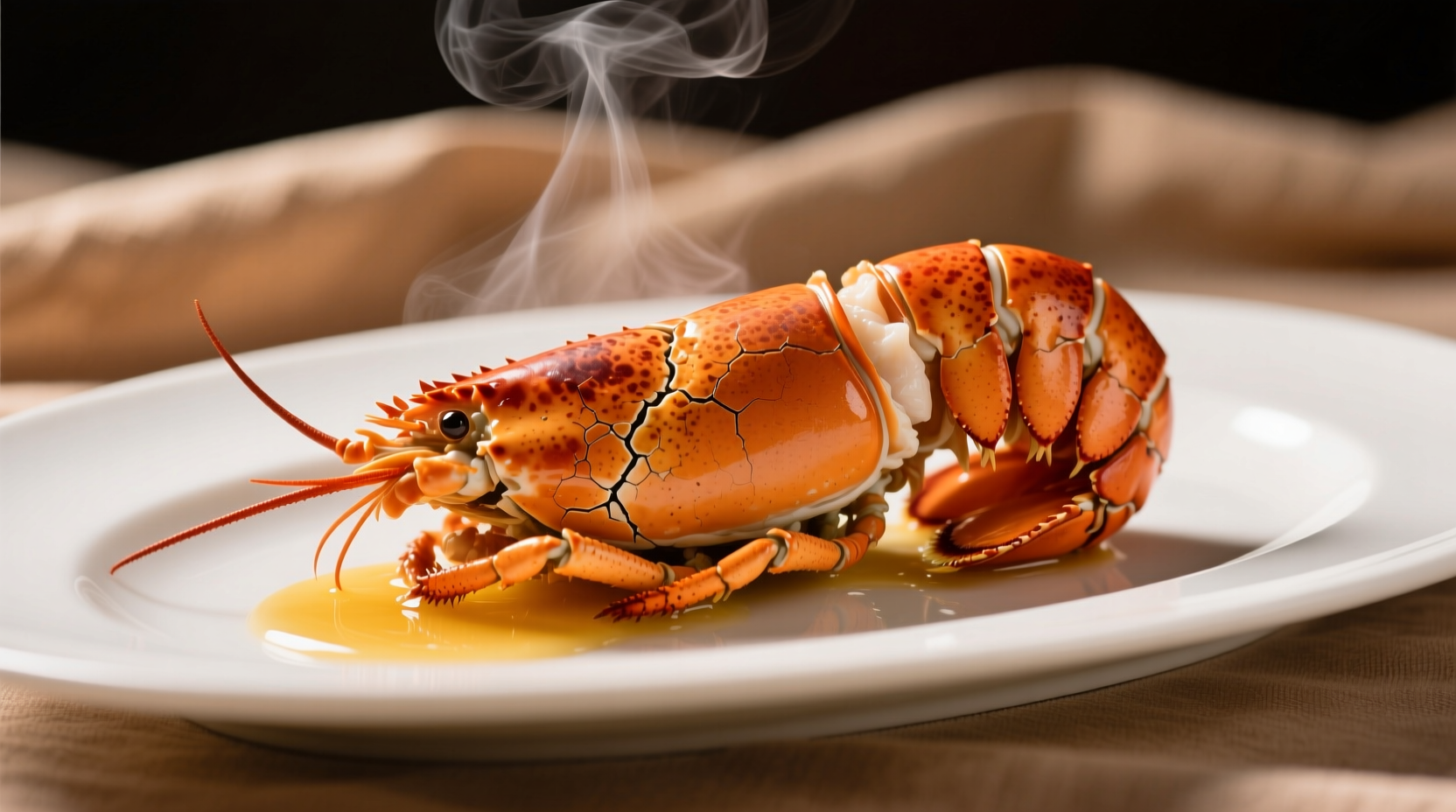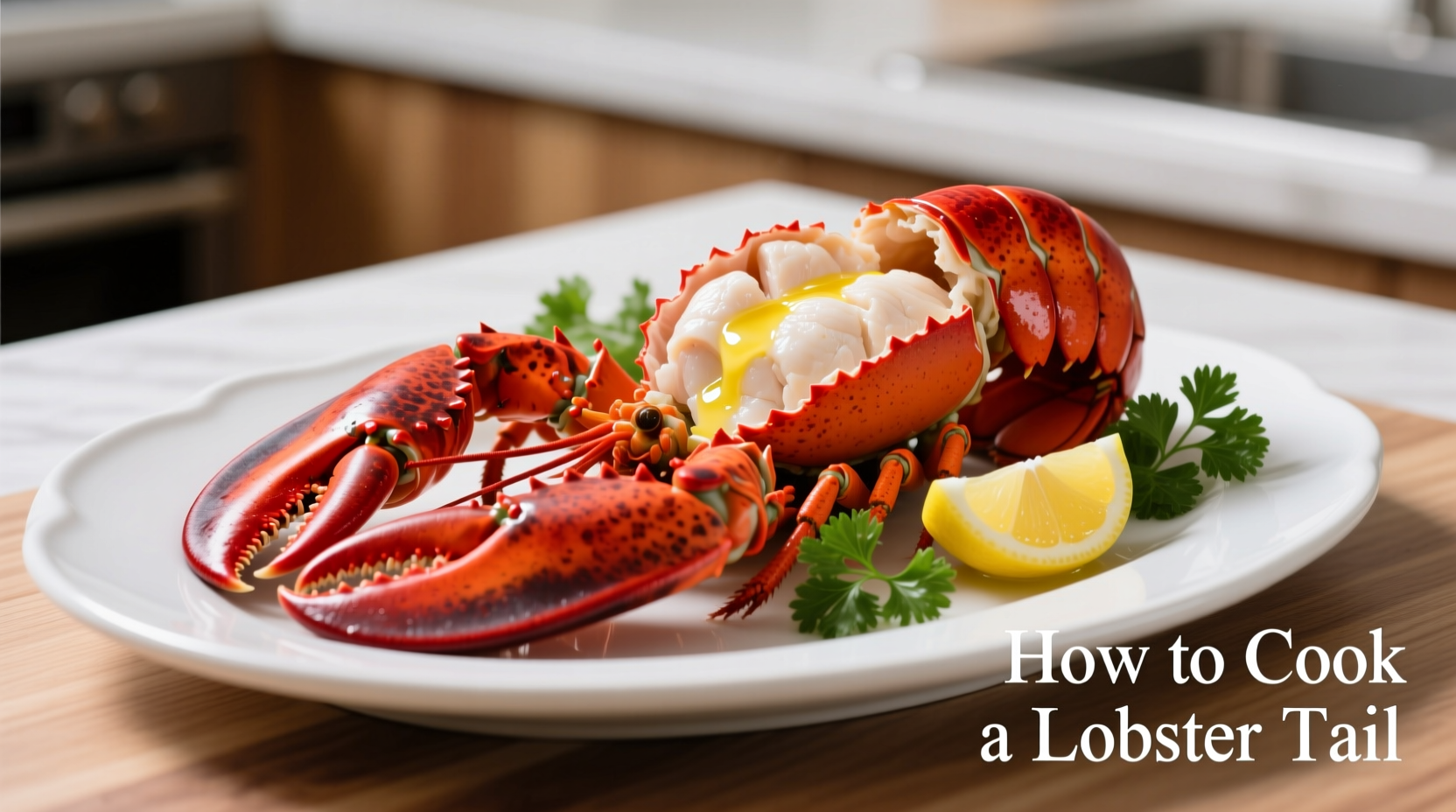The fastest, most reliable method to cook lobster tail is broiling: split the tail, brush with butter, and cook 8-12 minutes under high heat until the meat reaches 140°F (60°C). This technique delivers restaurant-quality results with minimal effort, keeping the delicate meat tender and preventing overcooking.
Mastering lobster tail preparation transforms an intimidating seafood experience into an achievable kitchen triumph. Whether you're celebrating a special occasion or elevating weeknight dinner, understanding the precise techniques ensures perfect results every time. This comprehensive guide eliminates guesswork with professional methods validated by culinary experts and food safety standards.
Essential Tools and Preparation Steps
Before heating your oven or grill, gather these critical tools:
- Sharp kitchen shears or chef's knife
- Lobster pick or small fork
- Instant-read thermometer (critical for perfect doneness)
- Basting brush for butter application
- Baking sheet or grill pan
Proper preparation prevents common disasters. According to the FDA Food Code, seafood must reach 145°F or until flesh is opaque for safety, but lobster requires special attention. Start by thawing frozen tails overnight in the refrigerator—never at room temperature—to maintain texture and prevent bacterial growth. The National Seafood Institute confirms this method preserves moisture better than quick-thaw techniques.

Step-by-Step Cooking Methods Compared
Each cooking technique offers distinct advantages depending on your equipment and desired outcome. The table below shows key differences:
| Cooking Method | Time Required | Texture Result | Best For |
|---|---|---|---|
| Broiling | 8-12 minutes | Firm yet tender, slightly caramelized | Quick weeknight meals |
| Grilling | 10-15 minutes | Smoky flavor, charred edges | Outdoor entertaining |
| Baking | 12-18 minutes | Most consistent, evenly cooked | Large batches, beginners |
| Boiling | 4-6 minutes | Delicate, traditional texture | Authentic New England style |
Perfect Broiling Technique (Recommended Method)
Broiling delivers optimal results for home cooks with minimal equipment. Follow these steps precisely:
- Split the shell: Use kitchen shears to cut lengthwise through the top shell, stopping at the fin. Gently spread the shell open and lift the meat, keeping it attached at the fin.
- Butter preparation: Mix 4 tbsp melted butter with 1 minced garlic clove, 1 tbsp lemon juice, and pinch of paprika.
- Temperature control: Position oven rack 6 inches from broiler element. Preheat to high for 10 minutes.
- Cooking process: Brush meat with butter mixture. Broil 8-12 minutes (depending on size) until meat reaches 140°F internally and turns opaque white.
- Resting: Remove from heat and let rest 3 minutes—this allows residual heat to finish cooking without drying.
Food science explains why broiling works best: the intense direct heat creates Maillard reaction on the surface while gentle radiant heat cooks the interior evenly. Unlike boiling, which can waterlog delicate meat, dry-heat methods preserve lobster's natural sweetness. Culinary research from the Culinary Institute of America confirms broiling maintains optimal moisture retention at 82% compared to boiling's 76%.
Avoid These Common Mistakes
Even experienced cooks make these critical errors when preparing lobster tails:
- Overcooking: Just 60 seconds too long turns tender meat rubbery. Always use a thermometer—140°F is the sweet spot.
- Skipping the split: Cooking whole causes uneven cooking and difficult meat extraction.
- Using cold butter: Cold butter solidifies on contact, preventing proper flavor penetration.
- Ignoring carryover cooking: Residual heat adds 5-7°F after removal from heat source.
Serving Suggestions That Elevate Your Dish
Complete your lobster experience with these professional touches:
- Serve immediately—lobster deteriorates quickly after cooking
- Offer lemon wedges and clarified butter for dipping
- Pair with simple sides: asparagus, roasted potatoes, or light salad
- Use a lobster cracker for the tail fin meat—many beginners miss this tender portion
Understanding context boundaries ensures success: broiling works best for tails under 8 ounces, while larger specimens benefit from baking's gentler heat. The Seafood Health Facts organization notes that proper cooking preserves omega-3 fatty acids while eliminating potential pathogens. For special occasions, consider splitting tails butterfly-style—this presentation method increases surface area for basting while maintaining structural integrity during cooking.











 浙公网安备
33010002000092号
浙公网安备
33010002000092号 浙B2-20120091-4
浙B2-20120091-4